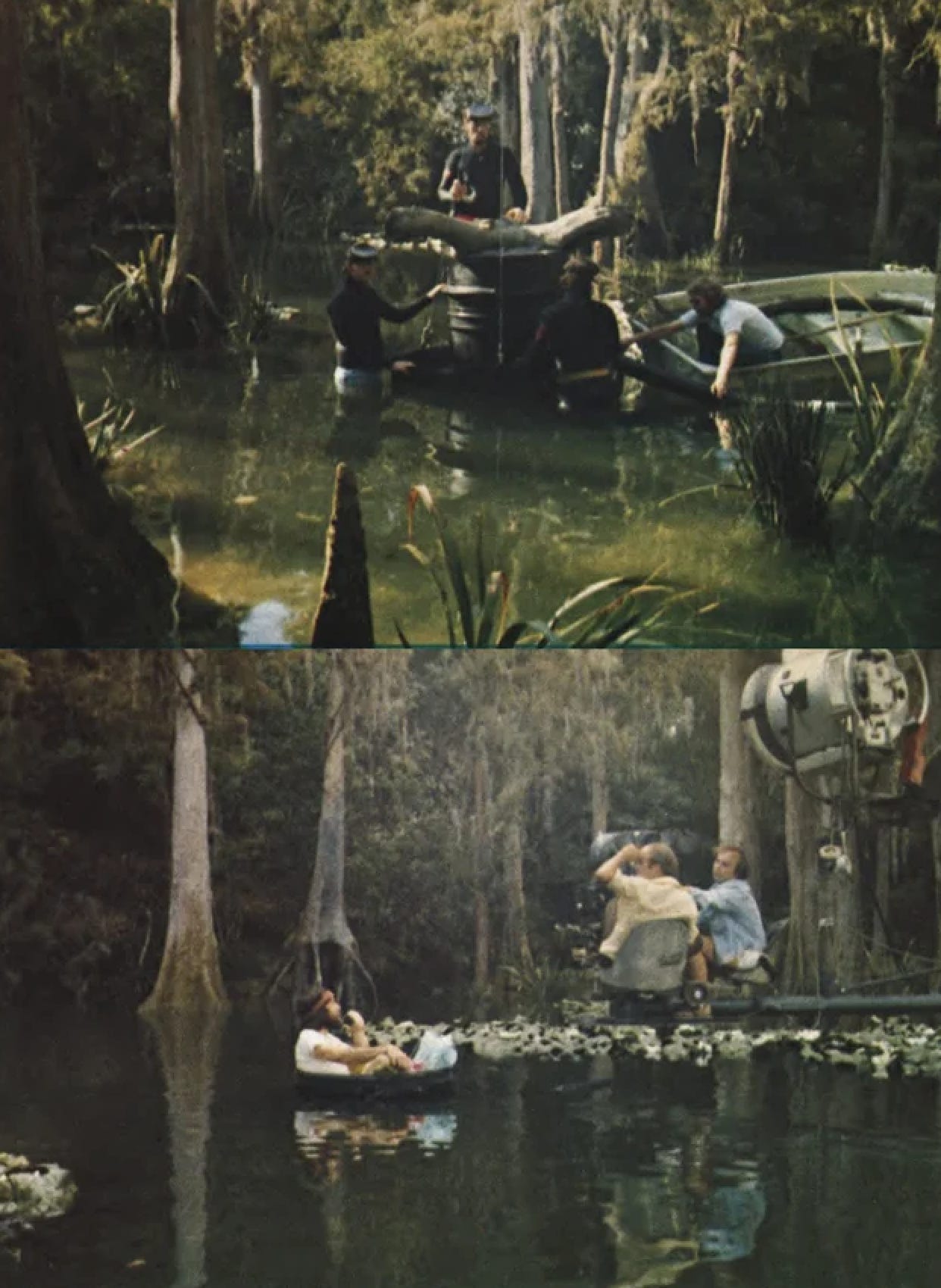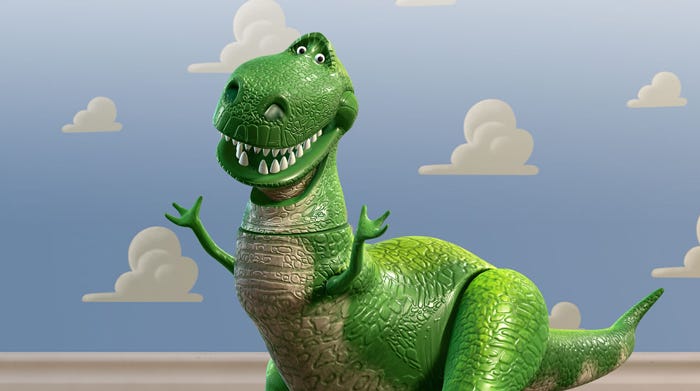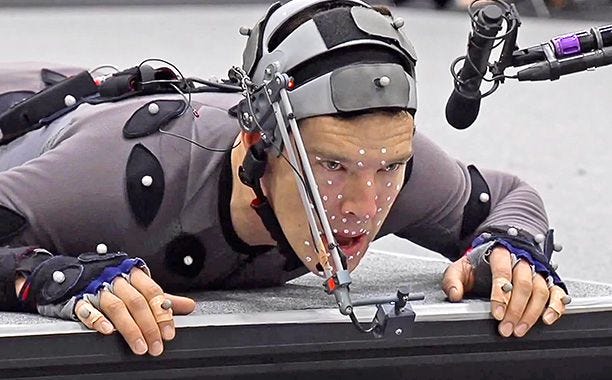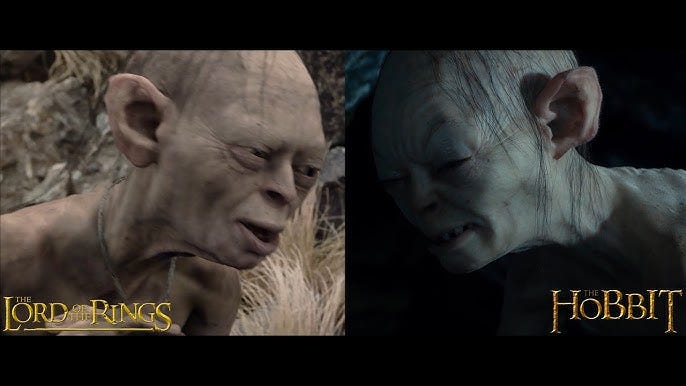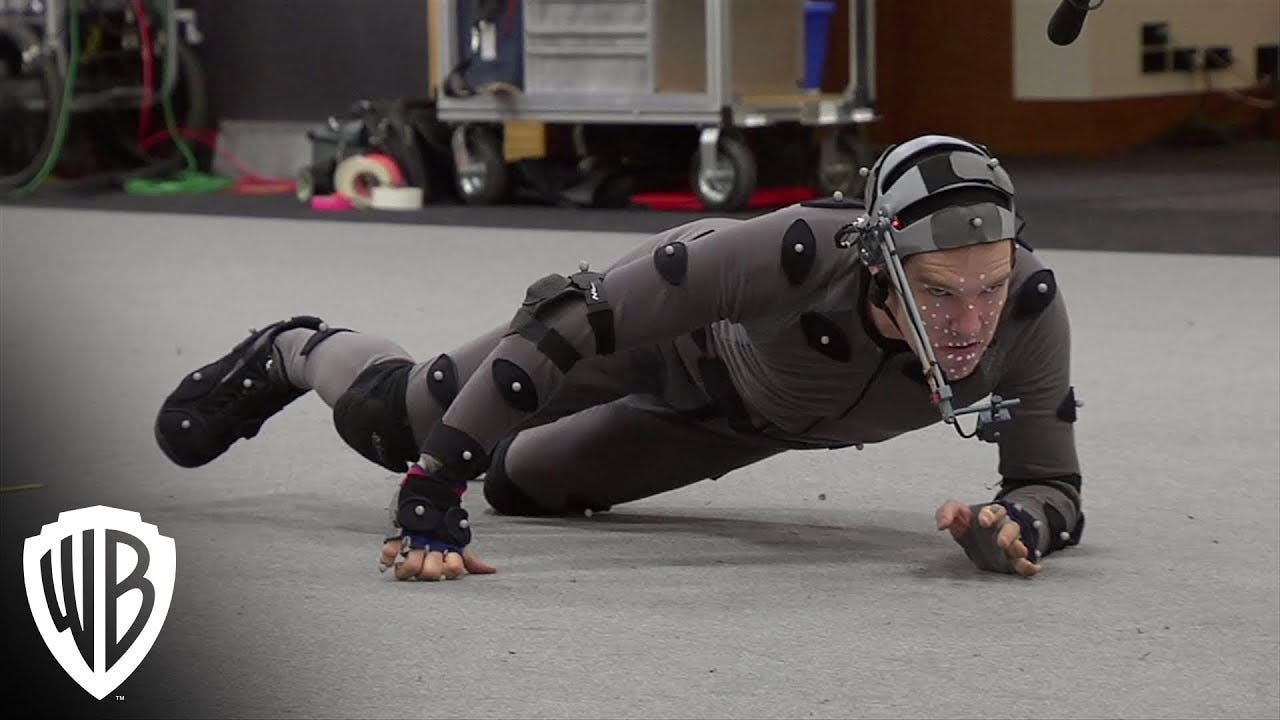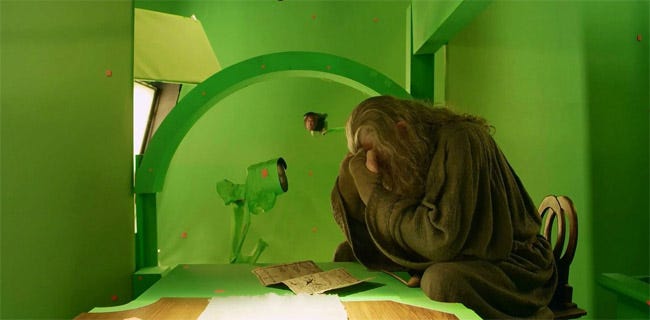Florida Man's Top 25 Voice Acting Performances of All Time, Part I: #21-25
Florida Man vs. the overlooked art of voice acting
Background on Voice Acting
The 97th Academy Awards are occurring on Sunday, March 2. This imminent event always leads me to remember that the Academy has never nominated a voice acting performance for any acting categories. This fact reflects a broader issue that the Academy heavily overlooks animation as a proper expression of cinema (although not all voice performances fall in animated film).
Disney had always had success at the Oscars. The man Walt Disney still holds the record for the most Academy Awards at 22 trophies. He largely won these awards for producing many short features for Disney. Animated films have also had success with the music categories. In 1941, the Disney film Pinocchio won the first competitive Academy Award for an animated film when “When You Wish Upon a Star”, sung by Cliff Edwards as Jiminy Cricket, won the award for Best Original Song.
Despite Disney’s success in the music categories, none of these films ever even received nominations for above-the-line competitive Oscars until another Disney film Beauty and the Beast earned a nomination for Best Picture in 1992. It ultimately lost to Jonathan Demme’s thriller The Silence of the Lambs. This Disney film from 1991 marked the cultural domination of the Disney Renaissance, sparked by The Little Mermaid in 1989. The Renaissance refers to the fact that Disney had not really had a consistent stretch of acclaimed films since The Sleeping Beauty in 1959.
The barrage of acclaimed releases by Disney in the 1990s brought into question of how the Academy should treat animation. Beyond The Little Mermaid (1989) and Beauty and the Beast (1991), I can also point to Aladdin (1992) and The Lion King (1994), which the Academy infamously snubbed for Best Picture. Bolstered by the distribution by Disney, the ascent of the CGI studio Pixar in the mid-1990s further complicated this issue with acclaimed and ground-breaking films, such as Toy Story (1995) and its sequel Toy Story 2 (1999). Ultimately, at the 74th Oscars in 2002, the Academy introduced the category Best Animated Picture. Neither Pixar nor Disney won this first award. Rather, Shrek did. It beat out Pixar’s Monsters, Inc. — but Pixar movies would go onto have great success in this category from then to today.
Nonetheless, even though animated films — which depend on great voice acting in addition to the animation — now have more opportunities to win recognition by the Academy, individual actors have never earned any recognition for their voice performances. They have not even earned a nomination. Not every performance that I give in this list will fall under pure animation. The definition of a “voice performance” can be murky, but I am going to define it as a performance by an actor whose physical human body does not appear whenever the respective character visually appears on screen. Although I began this article by analyzing animation and the Oscars, I am not even arguing that all of these performances should have earned Oscar nominations, but many of them do. I am going to list 25 voice performances. This is a fairly big list with a diverse set of performances, so not all deserved Academy Award nominations even if they deserve more recognition and acclaim than they usually do.
Many of these rankings of voice performances online often focus on how WACKY the voice is. People want to be ENTERTAINED. I do see this as a huge part of the importance of a voice role, but — for my ranking — I am largely considering how integral the voice performance is to the themes of the film. Because voice actors do not have their body to perform, they — by definition — have to put more effort into the voice. With my criteria, how the voice actor approaches the role must have some thematic consequence to the film in addition to the entertainment value and impressiveness of the intonations and range of the voice. Many of these characters also appear in multiple films in a franchise. If this is the case, I chose a single film in the series in which the voice actor performs the character in the most impactful way.
Finally, many of these characters come from musical Disney films. If a voice actor does singing as her character in the film, I am not taking into account the singing talent. I say “her” because this applies mostly to Disney princess films. I am not overlooking singing prowess, but that is a separate dimension from non-musical voice acting. For example, I am not going to include Paige O’Hara as Belle from Beauty and the Beast (1991) or Idina Menzel as Elsa in Frozen (2013) even though they perform iconic musical numbers in those beloved animated Disney films.
#25: David Cross & Patton Oswalt as the White Voices
FILM: Sorry to Bother You
YEAR: 2018
David Cross
I am going to start with a film that I think has been massively overlooked, but I get it. It’s a bizarre film. Boots Riley’s 2018 film Sorry to Bother You starts with a call center and ends with human-horse hybrids, but it makes an impactful commentary on socioeconomic divisions in a dystopian version of Oakland, California (although some people might already call that city “dystopian”).
The film follows the protagonist Cash Green, played by Lakeith Stanfield, as he tries to climb the corporate ladder at the telemarketing company RegalView. He quickly learns from another Black co-worker, played by Danny Glover, that he must use a “white voice” to begin succeeding. Perhaps Riley is making a heavy-handed commentary here, but he does so in a silly enough way to show us that he does not take himself too seriously.
When Cash Green finally finds his white voice, we hear the nasally register of David Cross, and Lakeith Stanfield’s real voice goes away. Cross begins dubbing over Stanfield’s lip movements. Riley’s choice of Cross might be the perfect one. Stanfield’s switch to Cross’s voice and subsequent, meteoric rise at RegalView makes a humorous but poignant commentary on code-switching in capitalism. Riley could not have landed that thesis without the perfect white voice of Cross.
Patton Oswalt
I am giving this slot to two people as David Cross’s performance in Sorry to Bother You is inextricably tied to Patton Oswalt’s dubbed performance as Mr. Bleep’s white voice. Mr. Bleep is another Black employee at RegalView, but he had already reached the top level before Green made his way after perfecting the white voice.
Throughout the film, we hear Cash Green’s original voice by Lakeith Stanfield and his white voice by David Cross, but — for the vast majority of Sorry to Bother You — we only hear Mr. Bleep’s white voice, played by Patton Oswalt. We do not even hear Mr. Bleep’s real name because his name is bleeped out when he introduces himself to Green. This use of Oswalt’s voice shows how Mr. Bleep has sold his soul to RegalView and perhaps shows what might happen to Green if he continues his path.
Omari Hardwick physically plays Mr. Bleep. We only hear his real voice once at a party hosted by wealthy CEO Steve Lift, played by Armie Hammer. When Green is invited to this important party, he continues his white voice to Lift, but Lift very quickly asks him to put on his real “black voice” so that he can “rap”. Fittingly, Green extemporaneously performs a rap in which he continually repeats the n-word, which the white audience enthusiastically parrots back to him.
Green finds himself secluded in a chair in a room alone. For the only time in the film, we hear Hardwick’s real voice in which he implores Green to not be stupid and to sell himself to Lift, who eventually wants to pay Green millions of dollars to become a human-horse hybrid. Hearing Hardwick’s voice for the first time really underscores the power of Oswalt’s more comical delivery of Mr. Bleep’s white voice. Without Oswalt’s and Cross’s performances, Riley would have had a much more difficult time delivering his thesis in an entertaining but clear manner.
#24: Jim Henson as Kermit the Frog
FILM: The Muppet Movie
YEAR: 1979
Uniqueness of Puppeteering
I have always scene the art form of puppeteering as bizarre but, obviously, very unique. It never has proliferated in the culture as much as animation has, but perhaps its lack of preeminence signals its difficulty in execution. To successfully puppeteer a character, the puppeteer must not only provide a convincing and entertaining voice but also create believable motions with their hands.
If you know any puppeteers, they probably come from The Muppets — specifically, Jim Henson and Frank Oz, who performed and voiced the most iconic Muppet characters. Before his death in 1990, Jim Henson performed as the the lead Muppet, Kermit the Frog — and Frank Oz performed his love interest Miss Piggy. The two of these men voiced so many other iconic characters, but Kermit and Miss Piggy constitute the integral duo in the franchise.
Isn’t Kermit a Physical Performance?
Unlike most other appearances later on this list, Jim’s performance does require some physical performance because he must use his hands to move the puppet. Some may argue that I cannot count Kermit or any other puppet as a “voice performance”, but we never see any of Jim’s actual body. Furthermore, a vast majority of Henson’s body never goes into the performance. On this list, I excluded some performances even though the actor’s body never appears.
More specifically, I initially included Anthony Daniels as C-3PO in the Star Wars franchise. We pay so much attention to C-3PO’s voice that sometimes we forget that a man’s entire body is moving underneath the shimmering, golden shell of that iconic robot suit. On the other side of the coin, I see Kermit as extremely different from C-3PO because, as I said, only Jim’s hand is moving in the performance of Kermit. Meanwhile, Daniels is moving his entire body — hands, arms, legs, head — in the Star Wars films.
Henson’s Performance in the Film
The Muppets have many feature films, and — before his death in 1990 — Henson performed in three of them: The Muppet Movie (1979), The Great Muppet Caper (1981), and The Muppets Take Manhattan (1984). Out of the three films, without question, I chose The Muppet Movie as Jim’s standout performance as Kermit. Our beloved frog has his most emotional journey in this film.
Kermit follows a hero’s journey in this film. He leaves his swamp to chase a dream of Hollywood. Henson’s soft, high voice is crucial to executing this story. Even though the voice is quite goofy, we can empathize with Kermit and his self-doubt, specifically, with the scene in the desert when he talks to another version of himself. I show this scene in the photograph in the beginning of this section.
Jim also performs perhaps the most famous and acclaimed Muppets song at the beginning of the film, “The Rainbow Connection”, which Kermit sings with his banjo on top of a log in the swamp. This song sets up the larger themes of chasing a dream later in the film. Because of the goofiness of Kermit and the overlooked nature of puppeteering, people might dismiss the demanding nature of this performance by Jim, but it was undoubtedly the most difficult performance to pull off in this entire list.
Why was it so physically demanding? As shown in the images above, Henson had to descend into the water in a Georgia swamp in a submersible. While the crew was filming the scenes in the swamp in the Chattahoochee National Forest, to complete all of the takes including his performances of “The Rainbow Connection”, he had to stay in the submersible for an hour at a time. He had to go underwater multiple times to finish all the takes. Henson wasn’t just going underwater. Remember that he also had to perform the puppeteering of Kermit. The crew had to put an air hose into the tank to give Henson oxygen throughout the hours of filming. I think that this process alone warrants a spot on this list for Henson.
Other performances on this list do also include physically demanding filming processes. These performances include mostly motion capture performances and not those in which actors record their voices in an air-conditioned booth in some studio in California — not a swamp in Georgia. Jim’s performance as Kermit in the swamp for The Muppet Movie demanded the most physically of the actor out of any performance on this list, so why does it not place higher? Well, I am trying to single out voice performances. The physicality of a performance should not count for too much of the ranking. That is kind of counterintuitive to this exercise.
A skeptic of Henson’s performance might argue that, if he had performed these scenes in the swamp in a Muppet movie in 2025, he would not have had to submerse himself in a tank in the water in the Chattahoochee swamp because technology has advanced. Perhaps I should be exalting performances that will stand the test of the time, but I have no choice but to consider the context of 1979 and the context of the technology available in whatever year actors did their performances.
Lastly, I want to note that — out of all of these voices — I would argue that Kermit’s voice is the most recognizable. How do I evaluate this? I would say that the most recognizable voices are those whereby many people could recognize the voice while they are closing their eyes and cannot see the character. Kermit is one of those voices and has been for five decades. Some generations will recognize some voices later on this list, but Kermit is cross-generational. Baby boomers to zoomers likely can recognize Kermit’s signature high voice.

#23: Wallace Shawn as Gilbert Huph
FILM: The Incredibles
YEAR: 2004
The Recognizability of the Character Gilbert Huph
Wallace Shawn’s performance as Gilbert Huph is the first of many appearances by Pixar characters on this list. He also is the first, specifically, of the 2004 Pixar film The Incredibles, personally, my favorite Pixar film and likely my favorite animated film overall. I rank The Incredibles higher than any other animated film from Disney in the five decades prior to the emergence of Pixar as a major player in animation, spurred by the studio’s debut feature Toy Story in 1995.
You likely do not recognize the name Gilbert Huph as you do for the previous ranking of Kermit the Frog, but you will recognize his voice and his performance assuming that you have seen The Incredibles. You will also recognize the actor’s voice even if you do not remember his name as you likely know Jim Henson’s name. Gilbert Huph plays the role of Bob Parr’s amoral and bean-counting boss at the insurance company before he returns to the life of a superhero. Beyond The Incredibles, a praised screen actor in his own right — Wallace Shawn famously employed his nasally, high-pitched voice for the Toy Story character Rex, a green tyrannosaurus rex toy. In that way, Wallace Shawn has a similar tone to Jim Henson as Kermit except that Wallace adds a manic quality.
Connection to the Exploration of Corporate Malaise of the Late 1990s
A few years prior to the 2004 release of The Incredibles, a few films in late 1990s explored the corporate malaise experienced by middle-aged males in the upper-middle class of the United States. Coincidentally, all of these four films of which I am thinking came out, specifically, in the year 1999.
Three dramatic films include Sam Mendes’s American Beauty, David Fincher’s Fight Club, and the Wachowskis’ The Matrix. We even saw this trend in comedies like Mike Judge’s Office Space. Many of these performances saw critical acclaim. In 2000, American Beauty won Best Picture at the Academy Awards, and Kevin Spacey won Best Actor for portraying the film’s jaded protagonist Lester Burnham. Five years later, The Incredibles perfectly encapsulated the same themes in a PG-rated family movie. I argue that it does so in a more succinct way than some of those live-action movies that I just mentioned.
Perhaps Brad Bird — the director of The Incredibles — needed to make to make the thesis of Wallace Shawn’s scenes clearer and more obvious. Bird needed to make scenes that some older children could have comprehended although these scenes more likely broke through with those children’s middle-aged parents. These parents might have had a similar white-collar job to Bob Parr in the film.
A Kids’ Movie's Violent Contrast to R-Rated FIlms
Bob Parr’s boss Gilbert Huph only appears in two scenes for a few minutes in the beginning of The Incredibles, but Wallace Shawn’s character lays the foundation for broader themes of the film. With his occasionally grating voice, Shawn embodies the unsympathetic and amoral bosses of these corporate jobs.
Unlike other voice actors later on this list, Shawn rarely changes his voice from character to character. In the Toy Story franchise, Rex the dinosaur doesn’t have a voice much different from Gilbert in The Incredibles. Nonetheless, Wallace’s word choice and emotional expression with his vocal performance of Rex manifests in a performance much more likable yet ditzier than that of Gilbert.
In both The Incredibles and those four films from 1999, bosses like Huph lead the jaded, male protagonists to quit their jobs and pursue a different life amid a mid-life crisis. Brad Bird’s film has a more comedic tone more similar to Office Space, and one could draw parallels with Bill Lumbergh in Mike Judge’s 1999 film. The 2004 Pixar film is obviously a work aimed at children and their families, yet its protagonist Bob Parr has the only violent reaction directed at his boss.
The anonymous narrator — portrayed by Edward Norton — in Fight Club beats himself up in front of his boss to make it appear that his boss had assaulted him, but Edward Norton’s character does not direct this violence toward his boss as Craig Nelson’s character does to Wallace Shawn’s character.
Wallace Shawn’s Strengthening of a Broader Theme
As I said, Shawn’s character ultimately leads Nelson’s character to lose his job. This fact illustrates another large difference between The Incredibles and the four examples of films from 1999. Again, a firing due to strangling and battery of a boss has a much more violent and darker impact on the audience than those R-rated films do. At a broad level, The Incredibles has even more dark plot points, such as Mr. Incredible — Bob Parr’s superhero identity — saving a man from attempting suicide by jumping out of a skyscraper.
Shawn really demonstrates his great vocal performance in the second scene in which he appears. Huph calls Parr into his office and chastises him for telling his clients the secrets of “penetrating the bureaucracy” — as Huph frames it — of the insurance company for which both of the men work. In this scene, Huph delivers a great monologue:
What I can't handle is your customers' inexplicable knowledge of Insuricare's inner workings. They're experts! Experts, Bob! Exploiting every loophole! Dodging every obstacle! They're penetrating the bureaucracy!
Then, Shawn’s lines delve into darker territory.
We're supposed to help *our* people! Starting with our stockholders, Bob! Who's helping them out, Huh?
…
I don't care about [your customers’] coverage, Bob! Don't tell me about their coverage! Tell me how you're keeping Insuricare in the black! Tell me how that's *possible* with you writing checks to every Harry Hardluck and Sally Sobstory that gives you a phone call!
While Parr is receiving this lecture from Huph, he sees a man getting mugged outside from the window in Huph’s office. Parr wants to help the man, but Huph sardonically retorts to Parr: “Well let's hope we don't cover him!”
When Parr tries to leave Huph’s office to help the man outside, Shawn’s voice gets more serious and menacing as he threatens to fire Parr if he leaves to help the man. As Huph wags his finger to reel in Parr back into Huph’s office, from Shawn’s vocal delivery, we get the sense that Parr is in the subservient position in this interaction. Craig Nelson, who does appear later in my ranking, has a deflated and defeated tone while Wallace Shawn is yelling at him in the office.
Once Nelson interrupts Shawn and grabs him by the neck, the power dynamic completely shifts. The fact that Parr towers over his boss puts Huph right back in the submissive position, and Parr unforgettably uses his superhero strength to throw Huph and breaks several walls in the office building. Consequently, Parr blows his anonymous cover at his job and outs himself as a superhero, and Huph fires him in response just as he was threatening to do during their interaction in the office.
In this scene, without the shifts in power dynamics, between Shawn and Nelson, we cannot lay the predicate for Parr’s ultimate departure from the pedestrian nature of office life and return to superhero work. Later, in this ranking, I will further delve into Craig Nelson’s voice performance as Bob Parr, the protagonist of The Incredibles. For many kids of the 2000s (perhaps including me), Shawn provided the first embodiment of a nagging boss, a very real archetype in many people’s lives. For this reason, he deserves recognition in the top 25.
#22: Benedict Cumberbatch as Smaug
FILM: The Hobbit: The Desolation of Smaug
YEAR: 2013
Background of The Hobbit Trilogy
More so than any other franchise, Peter Jackson’s The Lord of the Rings franchise made the biggest impact on motion capture, starting with Andy Serkis’s performance as Gollum in 2002’s The Two Towers. A decade after the acclaimed and lucrative trilogy, Peter Jackson begrudgingly returned to create a film trilogy for The Hobbit, J.R.R. Tolkein’s 1937 book, the original book in Middle-earth before The Lord of the Rings 18 years later in 1955. New Line Cinema knew that it had to replicate the success of The Lord of the Rings, or they could — at least — replicate the financial success. Luckily, for them, The Hobbit trilogy (2012-2014) did replicate the success! It grossed $2.98 billion, a hair higher the cumulative box office gross of the original The Lord of the Rings trilogy (2001-2003).
The original trilogy worked well as a trilogy because Tolkein’s The Lord of the Rings has 1077 pages, and he actually released it in three volumes, the same three installments through which Jackson released his films. New Line Cinema was not just juicing the series for maximum box office numbers (although I am sure that they did not complain). Creating a film trilogy of The Lord of the Rings made thematic sense, especially, considering the length of the original 1955 book.
On the other hand, the 1937 book The Hobbit has only 310 pages. Its sequel The Lord of the Rings more than triples it in length, but New Line Cinema still released its The Hobbit franchise in three films just as they did a decade prior with The Lord of the Rings. Unfortunately, Jackson had to put in a lot of filler, and these films did not have the same unanimous critical praise as The Lord of the Rings trilogy. It did not really even have positive reviews. The three films have an average Metacritic score of 61.0 while the three The Lord of the Rings films have an average Metacritic score of 91.0, indicating “universal acclaim”.
Cumberbatch’s Performance
To go further down the vein of the reviews of The Hobbit, only the second film The Desolation of Smaug received a Metacritic score above a 60, which indicates “positive reviews” instead of “mixed reviews”. The 2013 installment in the trilogy specifically earned a score of a 66. This film focuses on the protagonist, Bilbo Baggins (Martin Freeman), reclaiming the mountain Erebor from the dragon Smaug (Benedict Cumberbatch). Both Freeman and Cumberbatch serve as highlights in a trilogy that generally received lukewarm reviews.
Although the quality of the film declined over a decade, one thing massively improved: the technology of CGI and motion capture. Again, Jackson broke new ground with the creation of Gollum in The Two Towers. The visuals of Andy Serkis’s motion capture as Gollum in The Two Towers has surprisingly aged well, but this character that changed the course of cinematic special effects in 2002 massively improved by 2012. In the first film in The Hobbit trilogy — An Unexpected Journey in 2012 — we saw a much higher-resolution Gollum, but the special effect of Smaug demonstrated a much greater leap in motion capture and CGI.
Just as Andy Serkis did in The Two Towers to perform Gollum, Benedict Cumberbatch used motion/performance capture to perform as Smaug. Benedict Cumberbatch creates a deep, menacing voice to define this antagonist in The Desolation of Smaug. By 2013, Peter Jackson could expand motion capture from a tiny three-foot mutated creature in Gollum to a giant dragon in Smaug.
The book The Hobbit does not have the same thematic complexities that The Lord of the Rings does as Tolkien intended The Hobbit as a children’s fantasy novel. When Jackson was adapting The Hobbit to screen a decade after The Lord of the Rings, he had issues with adding the thematic complexity to a book initially seen as a children’s book. In 1955, The Lord of the Rings was a sequel to The Hobbit, and 18 years had passed. In 2012, Jackson was now creating a prequel to his The Lord of the Rings films. This switch in direction affects how one creates The Hobbit.
Jackson attempts to imbue The Hobbit films with the darkness of The Lord of the Rings by heavily including the One Ring, which did not have as much presence in the 1937 book. In The Hobbit book, Bilbo Baggins merely uses the ring as a little, magical trinket that bequeaths him with the power of invisibility. Tolkien does not describe its sinister, corrupting qualities until The Lord of the Rings, but Jackson felt compelled to add the corrupting forces of the One Ring in The Hobbit films.
This attempt to reverse-engineer The Hobbit films ultimately hurts the trilogy, but Benedict’s performance as Smaug perhaps demonstrates the best attempt at accentuating the dark themes in The Hobbit. Cumberbatch’s deep, menacing voices — in conjunction with his real-life crawling — provides a sort of physical, anthropomorphic manifestation of the One Ring that haunts Frodo Baggins and Sméagol in The Lord of the Rings. Whenever the One Ring tempts Frodo in The Lord of the Rings, we usually hear the voice of Sauron, but we never physically see Sauron after the introduction in The Fellowship of the Ring. Cumberbatch gives a corporeal quality to the One Ring that we often do not see in The Lord of the Rings.
In most ways, the improved technology by 2012 hurt The Hobbit trilogy. Even though the computers had improved, they did not improve upon The Lord of the Rings trilogy. Many people have criticized The Hobbit films of looking too similar to video games with the heavy use of CGI whereas The Lord of the Rings films used enough practical effects to create a sense of believability.
The infamous photograph above shows Ian McKellen, the actor of Gandalf, crying on a set with green screen completely engulfing him during the filming of An Unexpected Journey (2012), the first film in The Hobbit trilogy. Ian was reprising his role as Gandalf in these prequels. This photograph illustrates how the advancement of technology had sunken the spirits of a classically trained actor like McKellen. The technology changed, but the actor did not.
He had portrayed Gandalf only ten years before in The Lord of the Rings, yet — within that decade — everything had changed. Even though he had some of these special effects in The Lord of the Rings, he still filmed with other actors on a normal set, adorned with practical effects in New Zealand. Now, green screen had sterilized and neutered the entire art of screen-acting.
Despite depressing visuals like these on the set of The Hobbit films, Benedict Cumberbatch’s performance as Smaug presents one of the few ways in which technology enhanced The Hobbit and improved on what The Lord of the Rings otherwise could not do. You can watch that footage of Ian crying on set and compare it to Benedict completely embodying the role of Smaug on set in the same series. Cumberbatch elevated what Serkis had achieved in The Two Towers with voice acting and motion capture even if McKellen was living in a cinematic simulacrum.
#21: Pat Welsh as E.T.
FILM: E.T. the Extra-Terrestrial
YEAR: 1982
The Anonymity of Pat Welsh
Unlike every other voice actor on this list, Pat Welsh did not initially receive any credit for her performance as the titular alien in Steven Spielberg’s 1982 classic. Furthermore, she might be the most unknown of all the actors on this list. Ben Burtt, the sound designer of E.T. the Extra-Terrestrial, overheard Pat Welsh in a camera store in Marin County, California. Welsh was a 67-year-old retiree in California who had routinely smoked two packs of cigarettes a day for many years, resulting in the signature raspy voice of E.T. in the film.
Welsh was not a union actress, so perhaps that is why she did not initially receive credit. Also, people may have seen the performance of E.T. more so as a special effects novelty by Ben Burtt, who had previously served as sound designer for the original Star Wars films. He had created and synthesized the voice of R2-D2. He had to add a large amount of editing to his voice as R2-D2 in the Star Wars films. Consequently, people in Hollywood may have implicitly put E.T. in the same bucket, but E.T.’s voice has much less additional editing from Welsh’s original voice than R2-D2’s voice has from that of Burtt.
I feel compelled to include Pat Welsh on this list because people have overlooked her for years and years, yet — just as I said for Jim Henson’s voice as Kermit the Frog — E.T. is one of the most recognizable voices in cinematic history. If you close your eyes and only heard E.T.’s voice, you likely could guess which character was speaking even though not many people could recognize Pat Welsh’s name. Burtt’s serendipitous encounter with Welsh at a store in Northern California shows how much talent goes unnoticed in the industry. An unknown, elderly, chain-smoking woman created one of the most iconic voices in film history.
What Pat Welsh’s Voice Brings
For this film, both Spielberg and Burtt needed a voice performer who could achieve two very different goals.
provide a voice that sounds like an alien
provide a voice that elicits empathy from the audience
Pat Welsh’s voice perfectly achieves those two goals. Her raspy voice could sound like an alien, but — because she was an older woman — she provided the warmth and comfort of a grandmother even if she was an alien.
Furthermore, Welsh achieved these goals with very few unique words. Throughout the entirety of the film, E.T. only speaks approximately 50 unique words in English, but — with that limited set of words — Welsh composes one of the most iconic quotes in all of cinema: “E.T. … phone home”.
More Advanced Puppeteering
No, the puppeteering quality of E.T. does not enhance the voice acting of Pat Welsh, but I want to acknowledge the high skill of the puppeteering since I already mentioned Kermit. The Star Wars series had already had advanced puppets, such as Yoda, performed by Frank Oz — but E.T. gave us a puppet much more life-like than anything in Star Wars. The gentle, organic motions of the puppet perfectly complemented the soft nature of Pat Welsh’s voice performance.
If E.T. Came Out in 2025
With the announcement of the voice cast of Shrek 5 last week, I do wonder how big studios would cast films, such as E.T. the Extra-Terrestrial, if they came out in 2025. Dreamworks announced that Zendaya will be voicing Shrek and Fiona’s daughter, further corroborating the criticisms that studios are picking voice actors for just celebrity star power. We can see the cynical mood of Dreamworks and Universal when the narrator in the Shrek 5 trailer laughed after he announced Zendaya.
First of all, a studio would not be green-lighting a non-IP film with a mid-sized budget in 2025, but — if they did green-light E.T. — I feel like we would be getting a weird novelty voice like Amy Schumer or something. Luckily, E.T. came out four decades ago, and it is safe from those sorts of studio plots in the 21st century. A woman like Pat Welsh would not have risen to a star voice role in 2025.
I will continue my series with the #16-20 spots. I will finish this in five installments.








